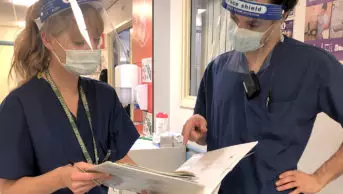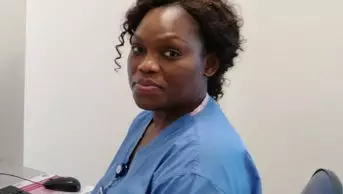
Courtesy of Rajesh Jethwa
I began working at the Mid Essex Hospital Services NHS Trust as a medication safety officer in December 2017. I applied for the role given my prior experience and keen interest in governance and medication safety.
The role was created after the ‘Improving medication error incident reporting and learning’ patient safety alert was published in March 2014. It stated that all healthcare trusts were required to identify a board-level director to oversee medication error incident reporting and learning.
Trusts were also required to identify a medication safety officer who would be a member of the National Medication Safety Network, support local and national medication error reporting and act as the main contact for medication error-related issues for both NHS England and the Medicines and Healthcare products Regulatory Agency.
With these posts in place nationally, it was paramount that a multidisciplinary group was set up at each trust to regularly review medication error incident reports, improve reporting and learning, and take local/national action to improve medication safety. Since 2014, the medication safety officer role has evolved through application of knowledge to influence policy, planning and commissioning as part of clinical governance within the organisation.
I prioritise incidents using a red flag system and speak with a clinical governance facilitator colleague to discuss the seriousness of each incident
09:00 — start
Usually, my first task of the day involves reviewing emails and identifying any medication incidents that occurred during the previous evening. I read about what happened and what impact the incident may have had on the patient. Each medication incident has a risk-grading matrix that reflects the reporter’s perspective of actual harm caused. I prioritise incidents using a ‘red flag’ system and speak with a clinical governance facilitator colleague to discuss the seriousness of each incident.
The clinical governance facilitator asks me whether I believe any of the cases are serious incidents that need to be declared at the director review group. Declaration of an incident warrants a discussion as to how this happened and how the patient was affected. Following this, I could be asked to produce a concise report or a comprehensive report, which is hugely dependent on the depth of root cause analysis needed.
10:00
As well as being a medication safety officer for the Mid Essex Hospital Services NHS Trust, my clinical responsibilities also include provision of a clinical pharmacy service to wards for older people at the trust. I touch base with the pharmacy technician on my ward and identify patient discharges and new admissions. I prioritise review of sick and complex patients and carry out medication optimisation reviews for patients who have been admitted for longer than four days, and who have been admitted three or more times in the past six months. This is an important performance indicator for our trust’s medicines optimisation strategy.
My role is to examine the sequence of events, procedures, processes, actions and any potential omissions
12:00
It is lunchtime now, but I have been scheduled to attend a ‘terms of reference’ meeting concerning a medication error where a patient received the incorrect dose of venous thromboembolism prophylaxis for two weeks. With the lead consultant for that area and the director of nursing, I have formed a team to establish the facts relating to the incident. My role is to examine the sequence of events, procedures, processes, actions and any potential omissions. I explain to the group that I can start creating a fishbone diagram and use the ‘five whys’ tool (a technique used to explore the cause and effect relationships underlying a particular problem), to address the root cause. We all agree on our roles and responsibilities and agree to feedback within two weeks on findings and conclusions, lessons learnt, recommendations and arrangements for shared learning in the trust.
14:00
We have our bimonthly medication optimisation and safety group meeting. The group is made up of two consultants, two directors of nursing and three staff members from the senior pharmacy management team. We discuss the minutes from the previous meeting, any action plans and then move onto the agenda. I present a review and analysis of medication incidents across the trust and propose actions to reduce risk to patients and staff. Alarmingly, this month I have identified a spike in the incidence of controlled drug incidents. Following this meeting, I am tasked with the formulation of a medication safety bulletin addressing these issues and for dissemination around the trust.
After the meeting, I set up a dashboard to monitor the incidence of controlled drug incidents with a view to monitor this frequently after implementation of the medication safety bulletin.
15:00
I receive an email from the procurement lead regarding a supply disruption alert on Epanutin 30mg/5mL suspension. This is more commonly referred to as a central alerting system (CAS) alert and these are issued directly by the Department of Health and Social Care. Management of the alert is necessary within three days and requires me to provide assurances to governance that the trust has strategies to cope with a temporary disruption to supply. I review product usage data over the past month; luckily we have six bottles — 30 days’ worth — of the drug in stock. I determine that we have enough supply to see us through the disruption. I produce a CAS alert action plan and send this over to the head of pharmacy and governance.
16:00
I use the final hour of the work day to focus my thoughts on creating the medication safety bulletin tasked to me from the earlier medication optimisation and safety group meeting. I collate all of the incidents over the past two months from our incident management reporting system relating to controlled drug administration errors. I then decide to analyse the common culprits for medication selection errors and look at the packaging of the medications. The packages are clearly different. I start to think about any other factors that may contribute to selection errors. I then plough through with my bulletin providing staff with pictures of the different formulations and an explanation of immediate-release and modified-release formulations. I run the bulletin by the head of pharmacy for a quality assurance check before sharing it with communications for trust-wide dissemination.
16:45
I have just received a call from an anxious nurse in the discharge lounge who has received blister-packed medications from the pharmacy as well as original medication packs from the ward. I was able to provide him with assurances that this will be resolved. Speaking to a few other members of staff in the discharge lounge, it was noted this was not a one-off incident. After confirming all the information I was able to produce a quick trust alert using the SBAR (situation, background, assessment and recommendation) communication tool. This tool is a form of quality improvement and is used to transfer information accurately between individuals in a concise format. The recommendations were to facilitate the discharge process by ensuring medications are sent with the ‘to take away’ requests via the pharmacist/pharmacy in order to minimise any risk of duplication to the patient.
17:15 — finish
Just before I clock off, I have a quick glimpse at my Twitter page and read a post about the World Health Organization’s Medication Without Harm challenge, which is aimed to find solutions to ensure the safety of medication practices.
Box: How to get a job as a medication safety officer
- Have experience working within clinical governance and medication safety
- Be able to demonstrate the ability to influence decision making with key stakeholders within your organisation and externally
- Have experience of change management
- Completion of a postgraduate management qualification is also desirable
You may also be interested in

‘Pharmacy plays a vital role in maintaining patient flow and efficiency of discharges’ – a day in the life of an orthopaedic pharmacist

‘Nothing compares to it’ — a day in the life of a child and adolescent mental health pharmacist
